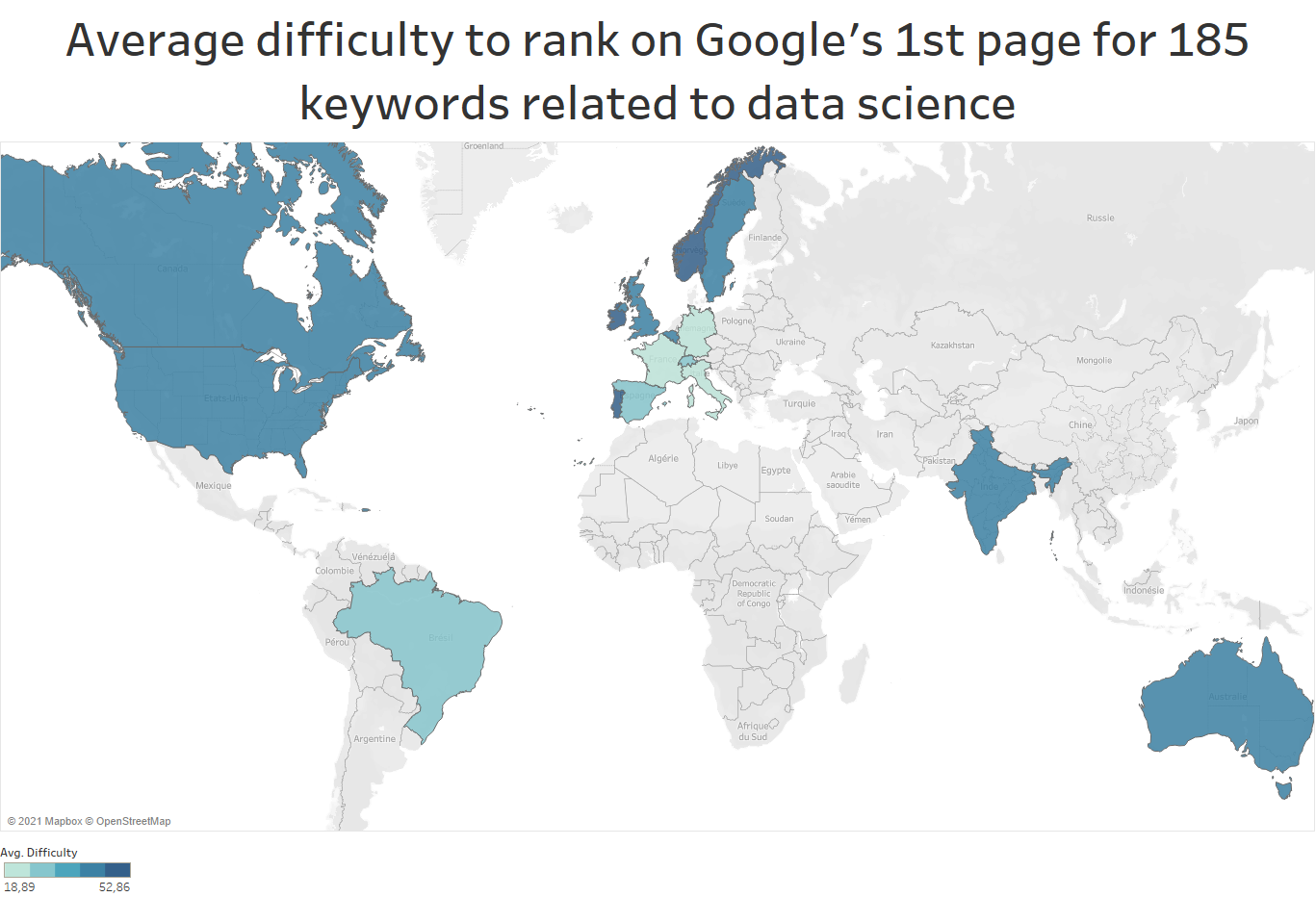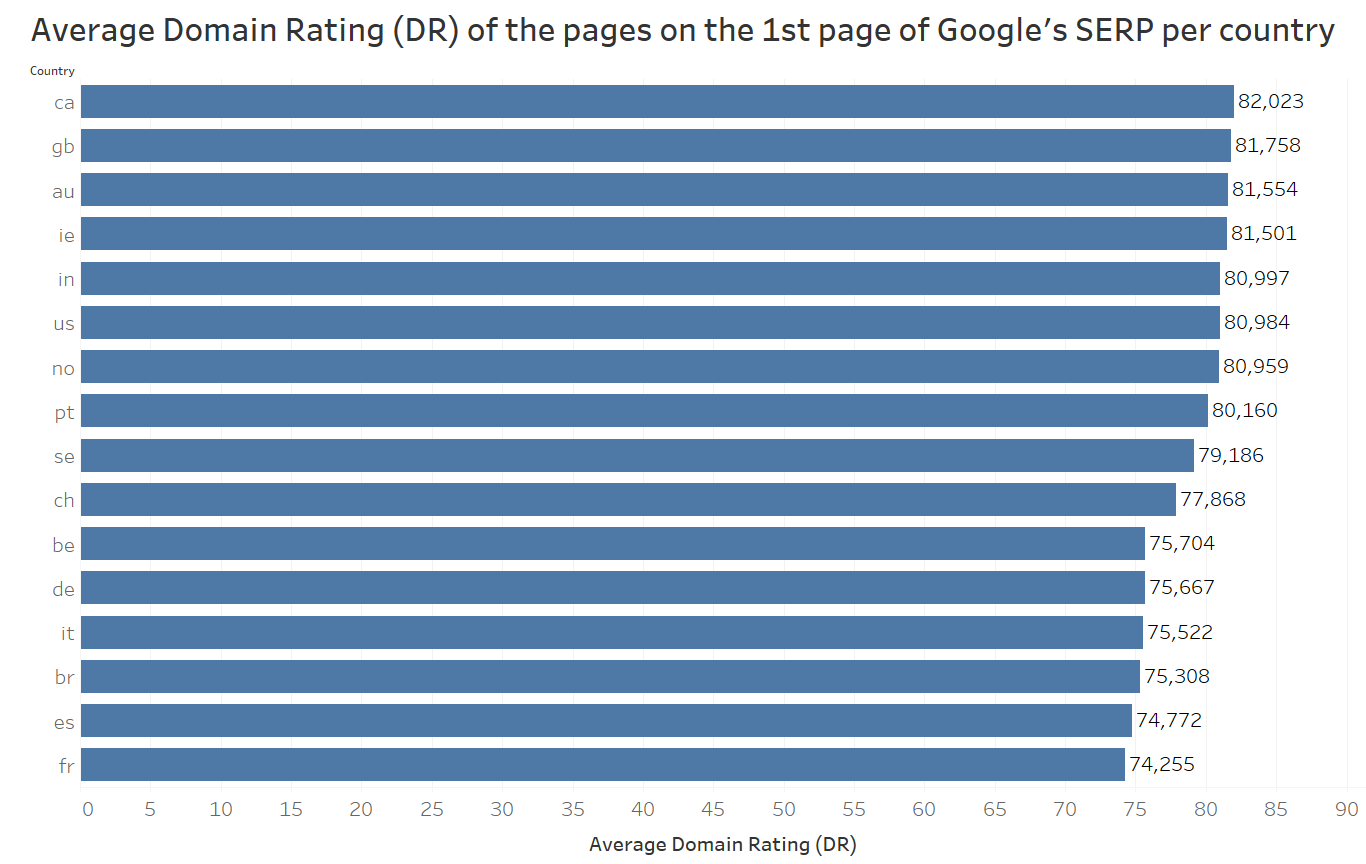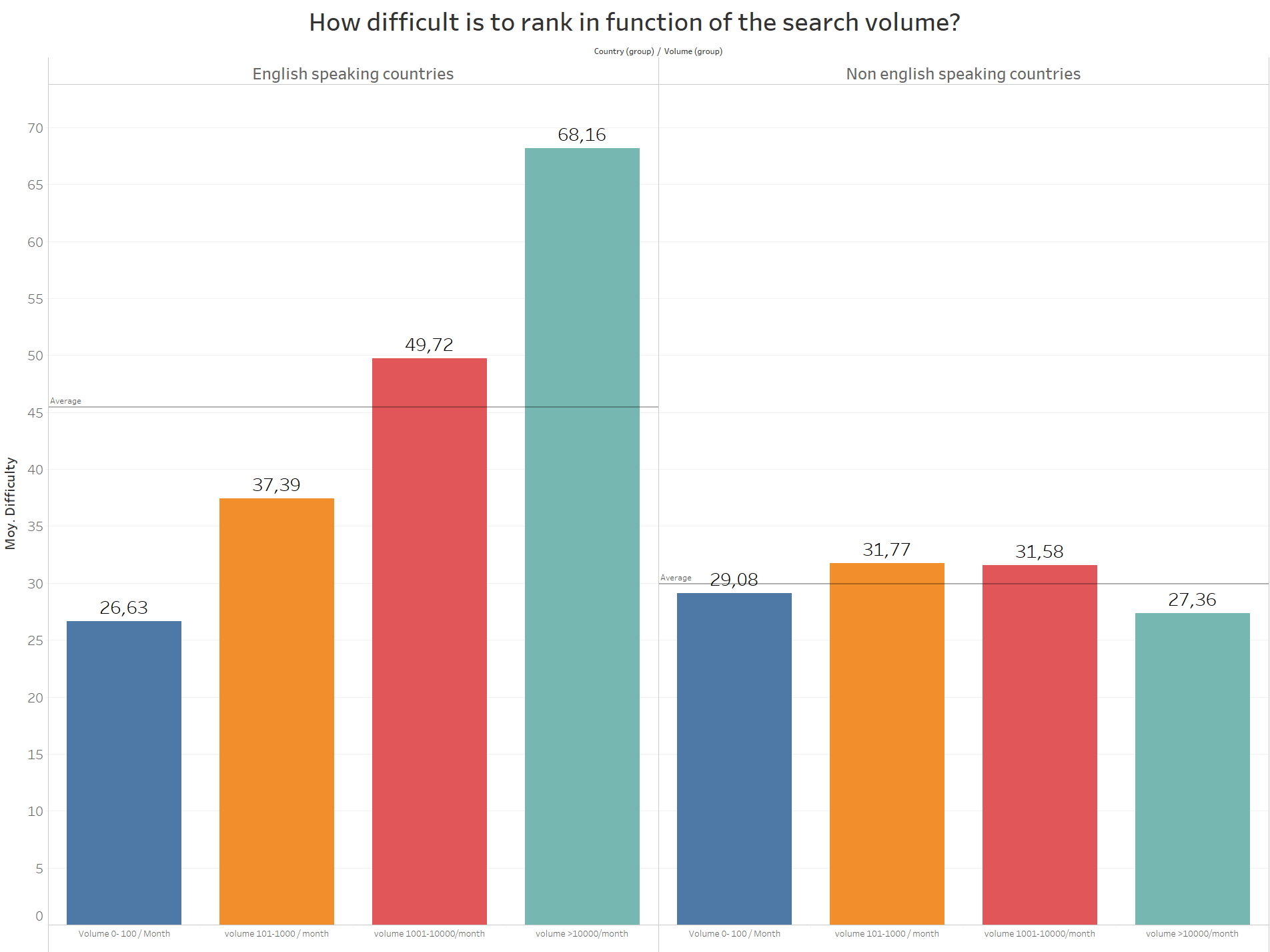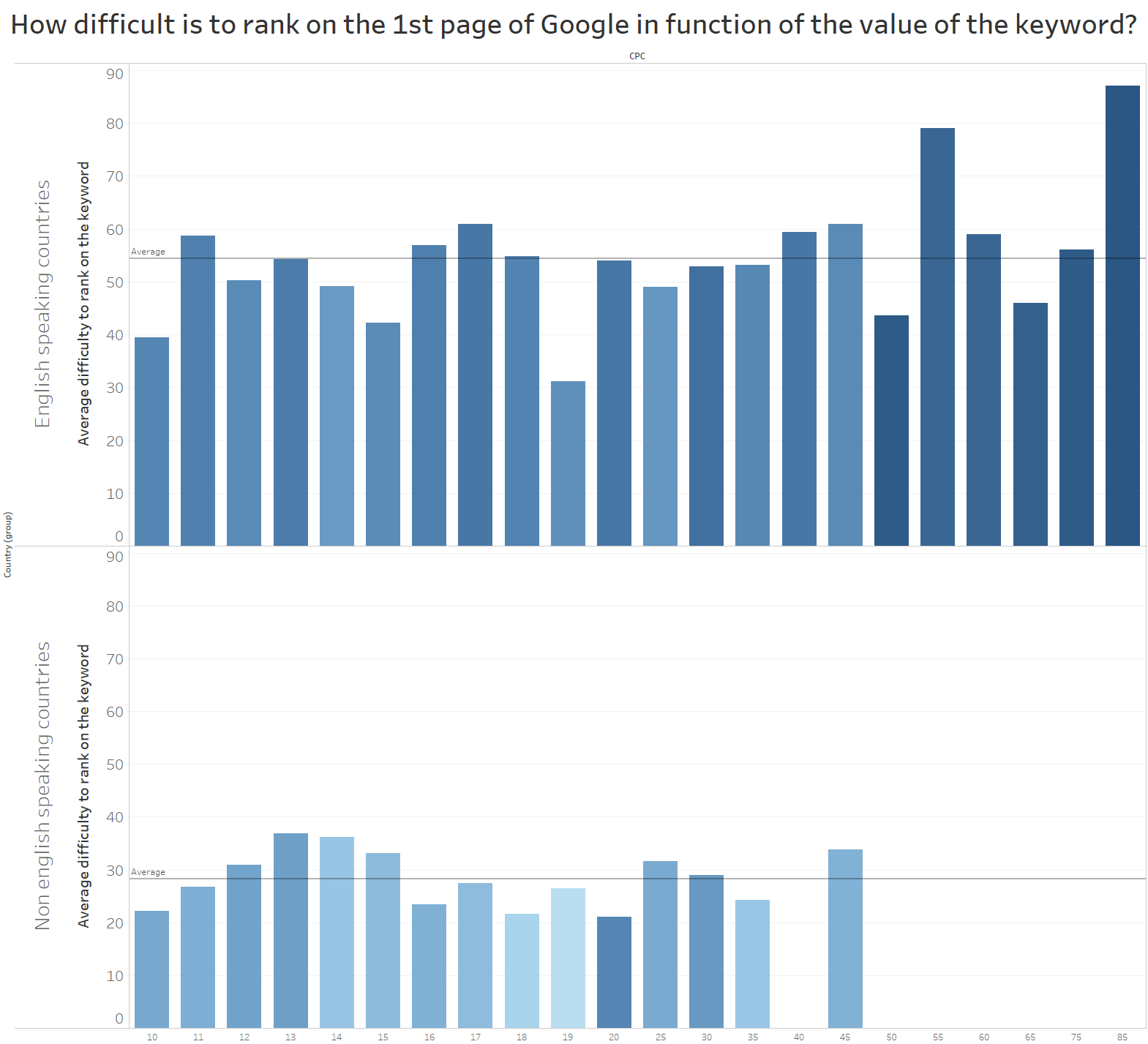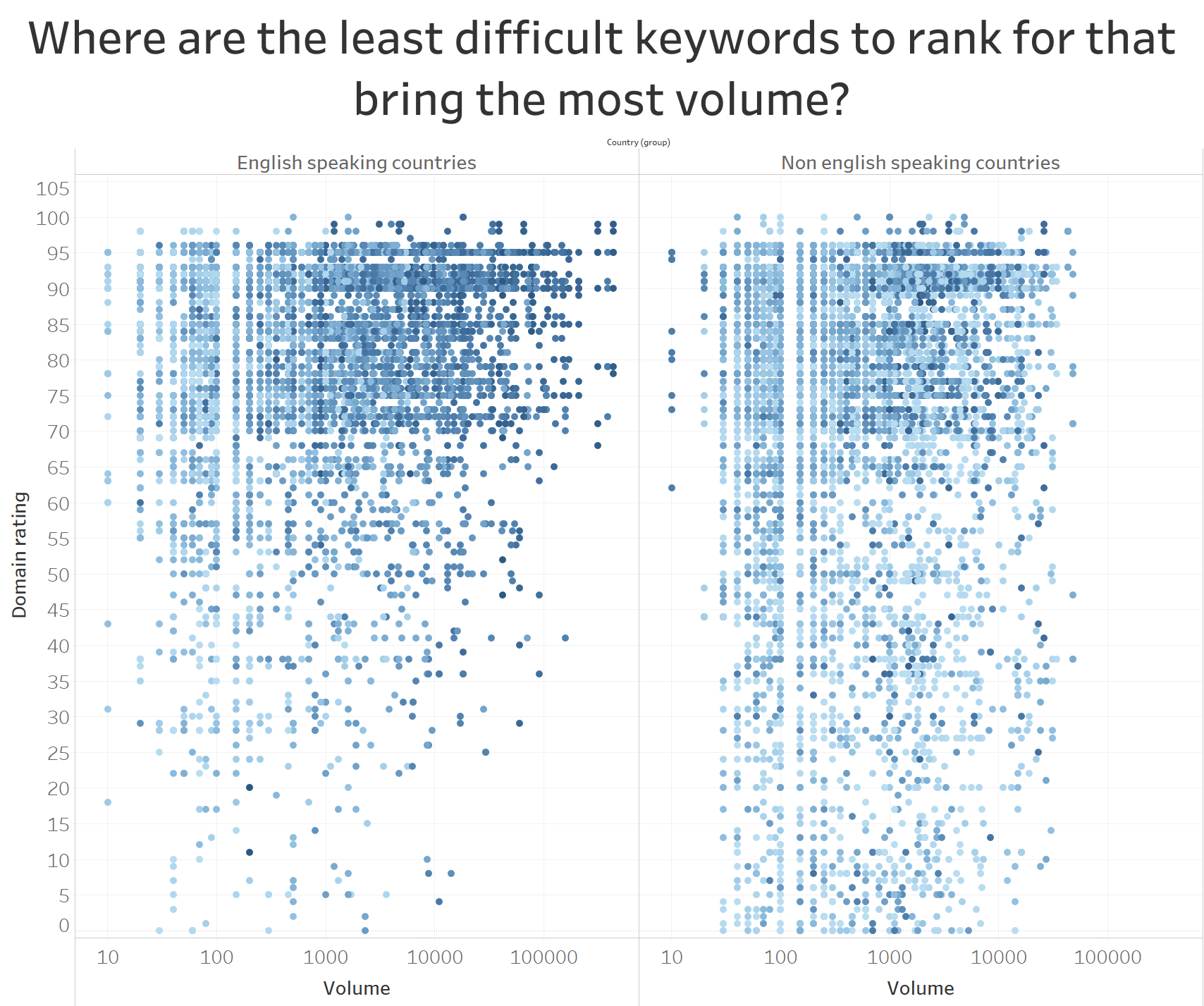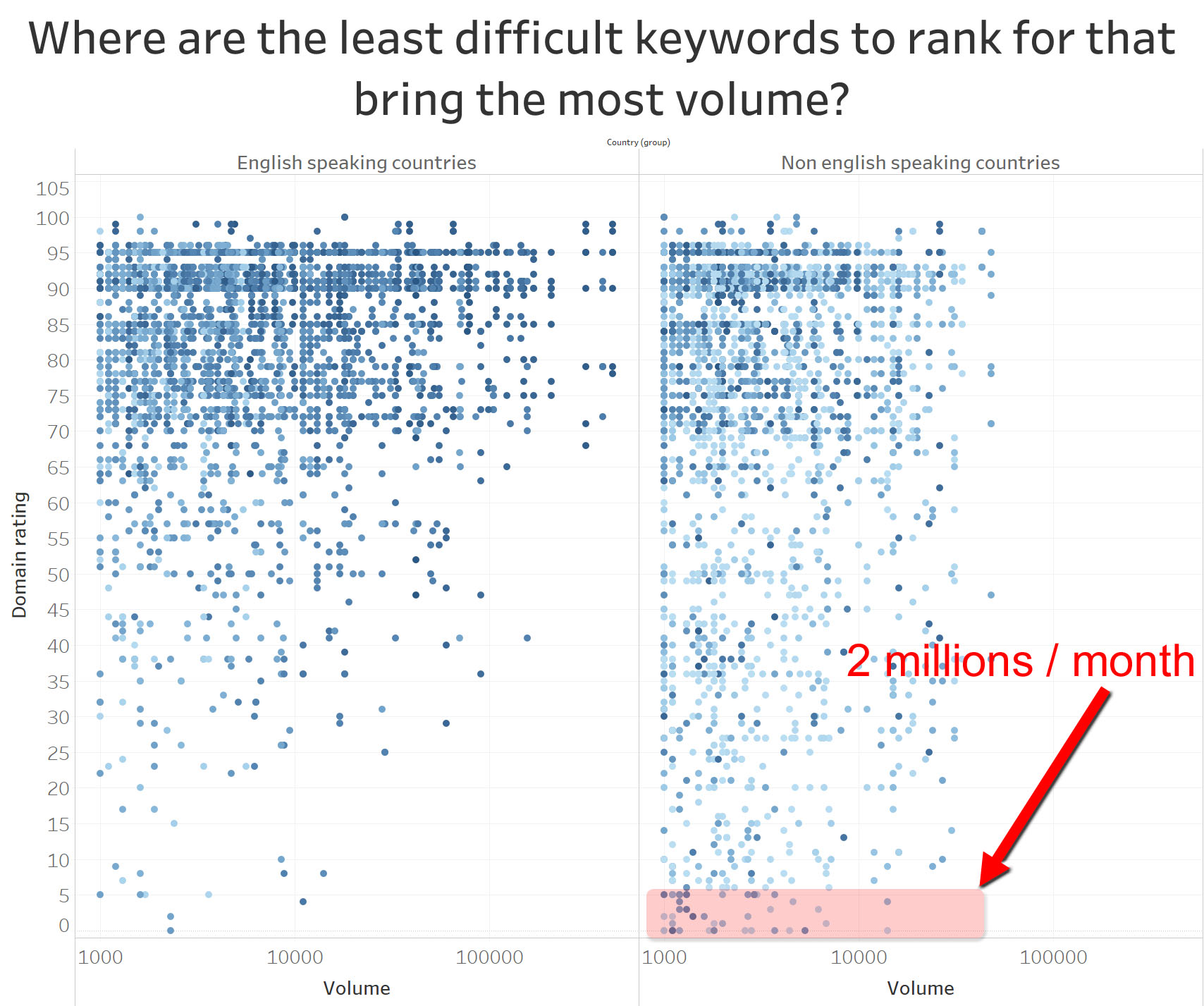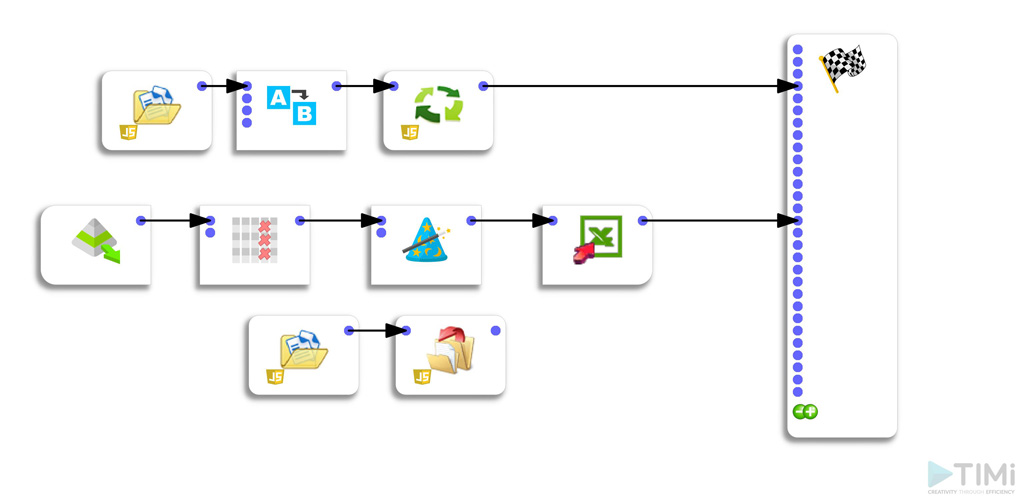SEO research. We analyzed 50000 web pages, covering 185 keywords related to data science in 16 countries. The raw data came from Ahrefs. We used Anatella to prepare and clean the data and Tableau to visualize it.
This research’s main result is that there are untapped opportunities to rank on the first page of Google on English keywords outside English-speaking countries.
Here is what we learned.
Some figures from our SEO research
- The United States is not the most competitive country in terms of SEO. Canada is the country where it is, on average, the hardest to get a place on the 1st page of Google’s results in terms of “data science.”
- The average cost per click (CPC) is $9.21
- le domain rating (DR) to appear on the first page varies by only 5% between English-speaking countries (80.9) and non-English-speaking countries (76.3).
- beyond a monthly volume of 10000 visits, the Ahrefs difficulty coefficient to be on the 1st page of Google is 34 in English-speaking countries.
- In non-English speaking countries, volumes of up to 34,000 visitors/month can be captured with difficulty coefficients of 2.
- With a domain rating < 50, there are 5 times more keywords accessible in the first 3 positions of the SERP in non-English speaking countries than in English-speaking countries.
- on the first page of Google, only 16% of keywords are accessible to sites in English-speaking countries with a domain rating (DR) < 70. In non-English-speaking countries, it is double (31.4%).
- For the first page of results, the average difficulty increases with research volume in English-speaking countries. In non-English-speaking countries, the difficulty remains constant (Ahrefs 29-31), whatever research volume.
There is only a 5% difference between the average domain rating for English-speaking and non-English-speaking countries
If we look at the figures as a whole, we can see that the average domain rating is relatively close between English-speaking and non-English-speaking countries. In English-speaking countries, the average DR is 81.4; in other countries, it is 76.6.
Key Learning: don’t stick to such global statistics. The average domain rating is undoubtedly an interesting indicator. Still, as we will see in the rest of this article, it is by examining the data that we will discover extraordinary opportunities.
Canada is the competitive country for data science keywords
Big surprise when calculating the average domain ranking (DR) of the pages ranking between the 1st and 10th position of the SERP, it is not the United States that is the most competitive country but Canada. The United States is in 6th place and is therefore at the bottom of the English-speaking countries. In other words, for all keywords related to the theme of “data science,” it is easier to rank on the 1st page of Google in the United States than in any other English-speaking country.
The average DR for Canadian pages is 82.
Key learning : non-English speaking countries are less competitive than English speaking countries for the same keywords. Although in English, everyone forgets that some terms are also the subject of massive searches in non-English-speaking countries.
In English-speaking countries, the difficulty of appearing on the first page increases with the volume of research. Not in other countries.
Logically enough, the difficulty of appearing on the first page of Google increases with the volume of queries in English-speaking countries. On the other hand, this is not the case in non-English speaking countries.
As you can see in the graph below, our research shows that the difficulty is constant, regardless of the volume of searches.
Key Learning : identify English requests with high volumes in non-English speaking countries. On average, these requests are no more difficult to ” find ” than those that generate less traffic.
Keywords with a value >10$ are 67% harder to catch in English-speaking countries
For the analyzed keywords monetized by Google for more than 10$, our research shows that the average difficulty as calculated by Ahrefs is 67% higher in English speaking countries compared to non-English speaking countries. The average difficulty of keywords over $10 is 54.43 in English-speaking countries and 28.31 in non-English-speaking countries.
In Ireland, the keyword “Cloud computing” is worth $85 (cost per click!), and the difficulty of being on the front page of SERPs is evaluated at 87. The average domain rating of sites on the first page is 91!
On the other hand, the situation is much more contrasted in non-English-speaking countries. Apart from the fact that none of the keywords studied is evaluated at more than 35$ per click, we realize that some costly keywords are, in fact, very accessible. In Germany, for example, the term “private cloud” is worth $19 per click, generates traffic of 16000 per month, and yet the difficulty to rank in the top 10 search results is only 5.
Key learning : we can quickly identify countries where high added value keywords are still easily accessible by using our dashboards.
3.84 million monthly searches accessible with a difficulty score < 10!
This is the other great revelation of this research: there is a cumulative volume of 3.854 million monthly queries accessible for an Ahrefs difficulty score < 10! And 100% of this traffic is on non-English pages. Even better, you can get 2 million monthly queries with a score >5, and 36% of this potential is in Germany.
The graphics above may not be the easiest to read, but they are essential to understand how to improve your SEO and increase traffic to your website.
On the graph, I have represented each keyword according to the monthly traffic and the keyword’s difficulty. I grouped the English-speaking countries on the left and the others on the right. You can see that there are no more points on the left, as soon as the volume exceeds 10000/month. In other words, in English-speaking countries, as soon as the volume exceeds 10,000/month, the keyword’s difficulty increases accordingly. In non-English speaking countries, this is not the case. Some requests generate substantial traffic and whose difficulty remains accessible.
Everything becomes more transparent with the graph above, in which I have only taken into account research volumes > 10000 / month. You can see that there are many more opportunities to rank well for high volume queries on the right.
There are only 18 keywords that generate more than 1000 visits/month in English speaking countries and for which it is possible to rank in the top 3 positions with a Domain Rating < 5. In non-English speaking countries, there are 86 keywords..
Key learning: what should be remembered from these graphics? That there are many untapped opportunities to search for traffic in non-English speaking countries using English keywords. Can you believe it?
Methodology
We have prepared a glossary of data science terms based on this KDNuggets article to carry out this research. We then completed the glossary with terms found on other online reference pages, and we eliminated generic terms that could have returned results unrelated to data science.
We injected the resulting list of keywords into Ahrefs. The exported files were processed with Anatella (see data preparation sequence below) and the data visualized using Tableau.
